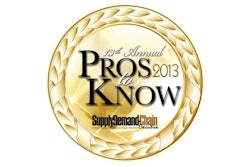In 2012, deal activity remained at low levels. Investors were cautious to invest in an environment marked by economic volatility and by high valuation expectations. Yet, a survey among chemical executives indicates a resurgence in M&A activity for 2013 fueled by favorable financing conditions; continuous consolidation in Asia; regional expansion; and access to low-cost feedstock in the U.S., Canada and Mexico, according to a report from global management consulting firm A.T. Kearney.
A review of all completed deals from 2001 to 2012 in the chemical industry shows a steep decline in deal volume and value in 2012, while valuation multiples remained comparatively high. After a surge in deal value in 2011 of $151 billion, deal value declined steeply in 2012 to $49 billion. In addition to lower deal volumes, the lack of major deals caused this steep decline: the top five deals in 2012 only had a combined value of $12.7 billion, compared to $44 billion in 2011. Multiples declined in 2012 but were still above financial crisis levels. Potential acquirers refrained from deals as they faced high valuation expectations from targets in the wake of economic uncertainty.
Geographically, most deal activity is still centered in Asia but North American acquirers and targets have regained market share. Asian acquirers and targets were the most active in 2012 with more than 43 percent market share primarily due to domestic consolidation of the still highly fragmented Asian markets. The share of North American companies as acquirers and targets has steadily increased from 17 percent in 2009 to more than 24 percent in 2012. In addition, U.S. companies were by far the highest valued targets in 2012 with 38 percent share in deal value (~$19 billion). Top announced deals for 2013 again concern majorly U.S. companies—indicating another year with a strong share of deal value by U.S. acquirers and targets. In Europe, Russia has established itself as the second biggest player with 18 percent share of deal volume in 2012, after Germany with 26 percent share. Most deal activity in Russia was related to the consolidation in the Russian nitrogen fertilizer industry.
In 2012, 107 (21 percent) out of the Global Fortune 500 companies were from developing countries—among them large petro-chemical players such as Sinopec (China), Sabic (Saudi Arabia), Braskem (Brazil), PTT (Thailand) and Reliance Industries (India). Chemical revenues from these leading players have been growing fast since 2007—mainly driven by impressive organic growth in their home markets and by investments. In the past five years, a number of investments were targeted at European and U.S.-based companies.
As such, petro- and basic-chemicals acquirers dominate the M&A landscape, pursuing backward and forward integration. Petro and basic chemicals acquirers had a 47 percent share of volume and a dominating 66 percent share of value in 2012 with respect to deals within the chemical industry. Specialty and fine chemical acquirers had a 39 percent share in volume but only a 29 percent share in value, indicating mainly portfolio adjustments in this more fragmented segment. In 2012, 55 percent of M&A activity of petro and basic chemicals acquirers focused on targets outside the chemical industry. In the last two years the most frequent deal types were forward as well as backward integration as main outside targets were in mining and oil/ gas extraction (12 percent) and rubber production (10 percent).
A survey among leading chemical executives suggests a resurgence in M&A activity in 2013 due to favorable financing conditions, continuous consolidation in Asia, regional expansion, and access to low-cost feedstock in the United States, Canada, and Mexico. Among respondents, 55 percent expect M&A activity to pick up speed again in 2013. Almost two-thirds of executives consider low borrowing costs and the liquidity of chemical companies as drivers for deal activity, indicating that strategic investors will use their regained financial strength to access new markets through acquisitions. Regional expansion is assumed to be increasingly between developing and developed countries: 64 percent of respondents expect Asian companies to pursue growth through acquisitions in Western economies and vice versa in 2013. Also, 77 percent of respondents anticipate forward integration to increase, especially into specialties and fine chemicals.
Different M&A activity levels are predicted for the different regions. More than 90 percent of respondents anticipate a continuous consolidation of the highly fragmented Asian markets to drive activity in China, India, and the rest of Asia. In contrast, the outlook for Europe is mixed, with almost 70 percent of executives naming economic uncertainty and the economic crisis in Europe as impediments, and 57 percent considering access to low-cost feedstock in the U.S., Canada, and Mexico as a driver of M&A activity in 2013.
Executives expect strong growth in alternative collaboration structures, driven by feedstock, market, and technology access. More than 50 percent of respondents expect growth in equity and contractual collaborations, such as joint ventures, long-term supply agreements, and strategic alliances. Access to feedstock, markets, and technology could be driving new partnership models in three key areas: (1) green-field type chemical investments in new regions leveraging alternative feedstocks, (2) combining access to classic feedstock with technology know-how, and (3) combining access to classic feedstock with market access.
For the full details of this report from A.T. Kearney, visit www.atkearney.com.








